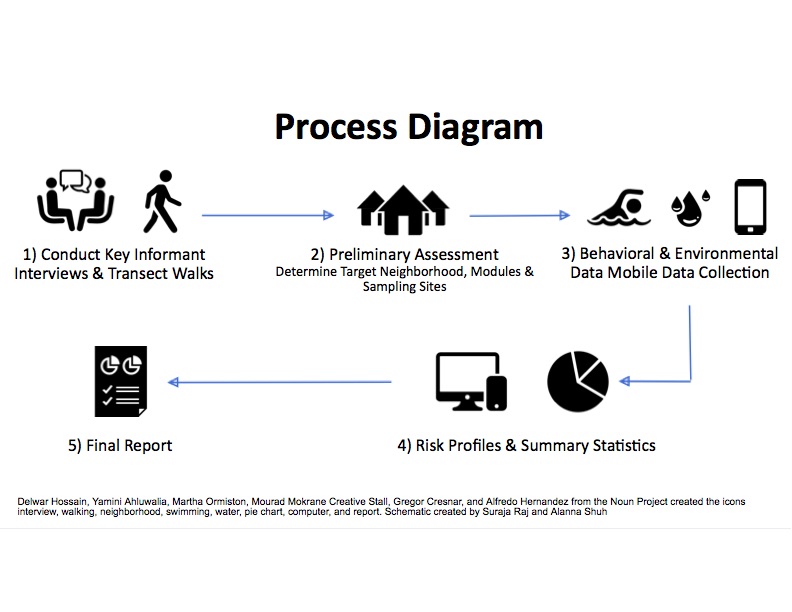Overview
The Center for Global Safe WASH at Emory University, in conjunction with EpiTech Consulting, has developed the SaniPath Exposure Assessment Tool to assess exposure to fecal contamination in urban settings. The SaniPath Tool is comprised of sequential modules. The tool modules guide the user through the steps of implementing the tool–from planning to data analysis. The tool is systematic yet customizable to local contexts. Data is collected via downloadable mobile forms that can be used on any Android mobile device and is uploaded to an online repository. The user can then visit an online interface to analyze the data and access graphical output of summary statistics and risk profiles. Lastly, a final report including key summary statistics, risk profiles, and program recommendations is generated for the user online.

Planning
The planning module includes guidance on estimating the resources, time, and costs required to conduct the tool.
Preliminary Assessment
The preliminary assessment includes key informant interviews and transect walks. The interview questions, along with transect walks, help identify target neighborhoods for the exposure assessment, and identify potential sources of fecal contamination. By the end of the preliminary assessment, users will have gathered data to generate a report highlighting: An overview of the city’s sanitation infrastructure, an overview of the target communities, observations from transect walks, pathways to be considered in the final assessment, and maps of each target community.
Mobile Data Collection
Data collection is done through KoBoCollect: a free and open-source app for Android devices. After the user downloads and configures the app, they can download the mobile data collection forms. Once data collection is complete, the user can upload their data to a data/form repository.
Behavioral Exposure Data
Using household, school group, and community group surveys, data is gathered on the frequency with which adults and children perform behaviors that lead to exposure to fecal contamination.
Environmental Sampling Module
Samples of the target communities’ environment are taken, processed, and analyzed for E.coli. The environmental sampling module helps quantify the typical concentration of E.coli present in each selected exposure pathway.
Risk Profiles & Summary Statistics
SaniPath uses Shiny, a web-based version of R, to conduct complex Bayesian analysis on the raw behavioral frequency survey data and environmental sample data, creating risk profiles for each selected exposure pathway. Users can generate and view risk profiles on the online interface as soon as they upload their data to the repository. Each risk profile considers not only the behavioral frequencies and the environmental sample data, but also accounts for other parameters such as intake volumes and duration of exposure . Summary statistics in the form of pie charts (behavioral data) and histograms (environmental data) are also included. All the data can be sorted by adults vs. children, pathways, and neighborhood.
Final Report
The ability to access an auto-generated final report is integrated into the SaniPath Tool. The final report provides an overview of the study, including details on the target neighborhoods, sample and survey data collected, and an overview and interpretation of the results. The final report also provides possible program recommendations based on the pathways that pose the greatest risk of exposure. Click here to view an example final report.


